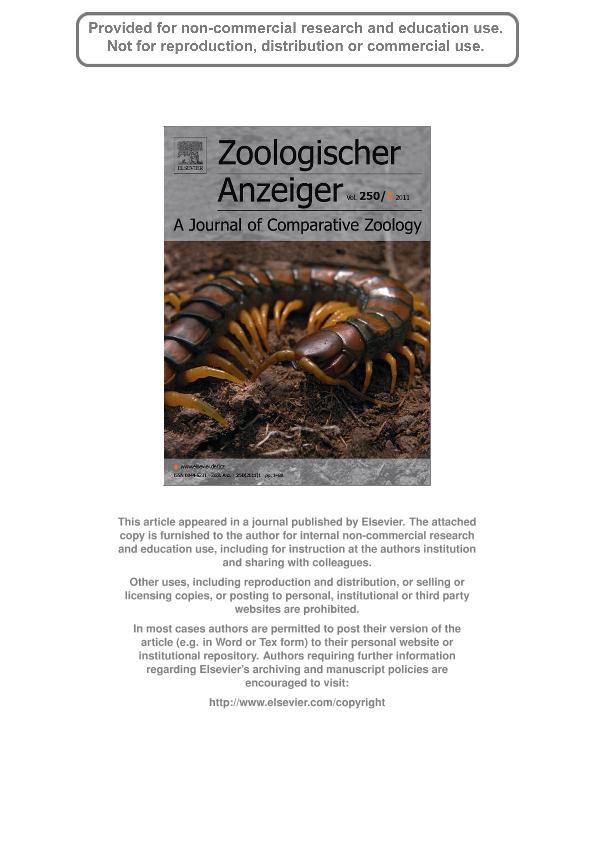Artículo
Weberiella De Carlo, 1966 (Insecta: Heteroptera: Belostomatidae) revisited: Redescription with a key to the genera of Belostomatidae and considerations on back-brooding behaviour
Fecha de publicación:
03/2011
Editorial:
Elsevier Gmbh
Revista:
Zoologischer Anzeiger
ISSN:
0044-5231
Idioma:
Inglés
Tipo de recurso:
Artículo publicado
Clasificación temática:
Resumen
Males of some subgroups of Belostomatidae brood the eggs attached to their backs, whereas the eggs are attached to the vegetation by females in others. Male brood care is obligatory in the belostomatine species of Abedus Stål, 1862, Belostoma Latreille, 1807, Diplonychus Laporte, 1833, Hydrocyrius Spinola, 1850, and Limnogeton Mayr, 1853. Recent investigations into relationships among Neotropical Belostomatinae have led authors to recognize a clade Belostomatinae, which is mainly characterized by back-brooding behaviour. It is likely that Weberiella belongs to this clade. Males of the only described species W. rhomboides (Menke, 1965) are reported as carrying eggs on their back for the first time here. Since this species was described based on a single female specimen from French Guiana, W. rhomboides is redescribed based on specimens from Amazonas, Mato Grosso, Rondônia, and Roraima States, Brazil. Its distribution in Brazil is mapped. The scale-like abdomen is a presumably autapomorphic condition not found in the other belostomatid species. A key to the genera of Belostomatidae including Lethocerinae and Horvathiniinae is provided. Even though a formal parsimony analysis is not presented here, a placement of W. rhomboides in Belostomatinae is tentatively suggested based on the back-brooding behaviour of males as a shared apomorphy. Convergent evolution cannot be excluded as suitable vegetation for depositing eggs is not available in the specific habitat (kinon) of W. rhomboides.
Palabras clave:
BELOSTOMATIDAE
,
WEBERIELLA
,
BACKBROODING
,
SYSTEMATICS
Archivos asociados
Licencia
Identificadores
Colecciones
Articulos(CCT - LA PLATA)
Articulos de CTRO.CIENTIFICO TECNOL.CONICET - LA PLATA
Articulos de CTRO.CIENTIFICO TECNOL.CONICET - LA PLATA
Citación
Estevez, Ana Lia; Ribeiro, José Ricardo Inacio; Weberiella De Carlo, 1966 (Insecta: Heteroptera: Belostomatidae) revisited: Redescription with a key to the genera of Belostomatidae and considerations on back-brooding behaviour; Elsevier Gmbh; Zoologischer Anzeiger; 250; 1; 3-2011; 46-54
Compartir
Altmétricas




